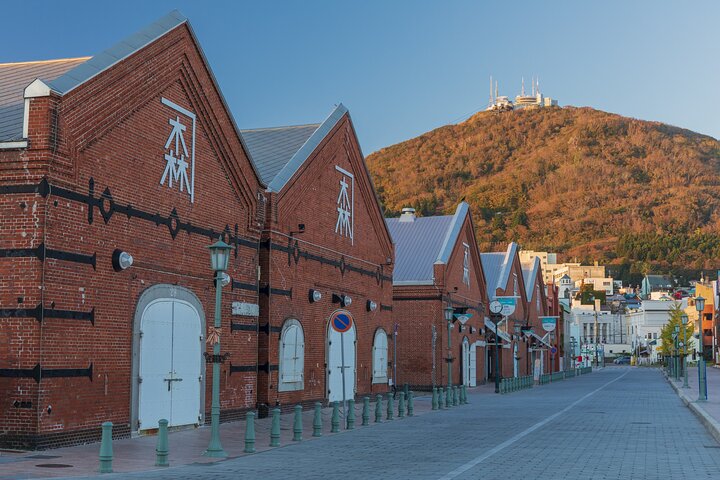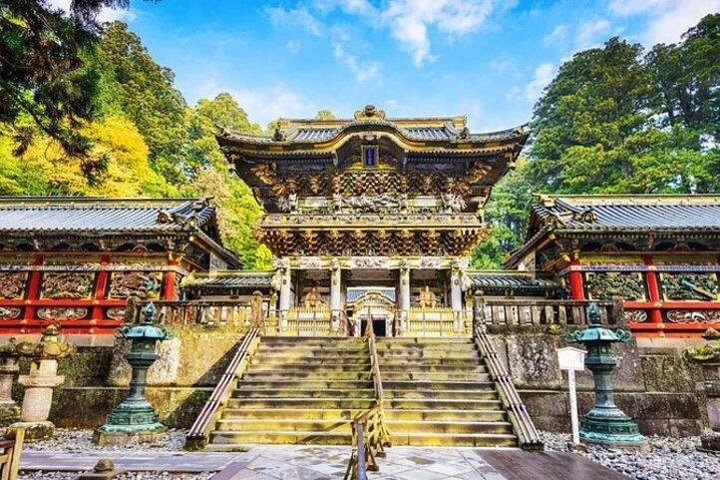Explore Hakodate’s highlights with a licensed guide in a private vehicle. Discover European buildings, churches, and red-brick warehouses efficiently.
Explore Hakodate’s highlights with a licensed guide in a private vehicle. Discover European buildings, churches, and red-brick warehouses efficiently.
- Mount Hakodate - Mount Hakodate (函館山, Hakodateyama) is a 334-meter tall, forested mountain located at the southern tip of the peninsula where central Hakodate is situated. On clear days and nights, the views from the mountain are breathtaking and are considered one of Japan’s top three night views, alongside Nagasaki’s Mount Inasa and Kobe’s Mount…
- Mount Hakodate - Mount Hakodate (函館山, Hakodateyama) is a 334-meter tall, forested mountain located at the southern tip of the peninsula where central Hakodate is situated. On clear days and nights, the views from the mountain are breathtaking and are considered one of Japan’s top three night views, alongside Nagasaki’s Mount Inasa and Kobe’s Mount Rokko.
The summit, accessible by ropeway, bus, or car, offers facilities such as observation platforms (free of charge), souvenir shops, a café, and a cafeteria-style restaurant.
- Onuma Quasi-National Park - Recognized as a “quasi-national park,” Onuma Park (大沼公園, Ōnuma Kōen) is located just twenty kilometers north of Hakodate. It is renowned for its scenic, island-dotted lakes and the impressive volcano, Mount Komagatake.
Onuma Park is easily accessible for a day trip from Hakodate or as a stopover on the journey between Hakodate and Sapporo, as most limited express trains between the two cities stop at Onuma Koen Station, the central railway station.
-
Goryokaku Park - Goryokaku Park is a historic star-shaped fort in Hakodate, now a beloved public park. Originally constructed in the late Edo Period as a Western-style fortress, it later became the site of the final battle between the Tokugawa shogunate and the Meiji government. Today, the park is celebrated for its cherry blossoms, with over 1,000 trees blooming in early May. Visitors can also enjoy panoramic views from the nearby Goryokaku Tower.
*Entry to Goryokaku Park is free, but there is an admission fee for Goryokaku Tower. - Hakodate Morning Market - The Hakodate Morning Market (函館朝市, Hakodate Asaichi) operates daily from 5 am (from 6 am during winter) to noon, just a short walk from JR Hakodate Station. The market area covers about four city blocks.
Products available include a variety of fresh seafood such as crabs (kani), salmon eggs (ikura), and sea urchin (uni), as well as fresh produce like melons. Numerous restaurants in the market area offer fresh seafood breakfasts, such as uni-ikura domburi.
- Motomachi - Hakodate’s harbor was one of the first to open to foreign trade in 1854 after Japan’s isolation period ended. Consequently, many traders from Russia, China, and Western countries settled in Hakodate. Motomachi, at the base of Mount Hakodate, became a favored district among the new foreign residents.
Many foreign-style buildings remain in the area today. Among the most notable are the Russian Orthodox Church, the Old British Consulate, the Chinese Memorial Hall, the former branch office of the prefectural government, and the old Hakodate Public Hall (closed from November 2018 until April 2021).
Admission
300 yen
- Kanemori Red Brick Warehouse - Hakodate Port was among the first Japanese ports to open to international trade towards the end of the Edo Period (1600-1867). Several red brick warehouses from the trading days remain along the waterfront in Hakodate’s bay area and have been transformed into a charming shopping, dining, and entertainment complex.
In addition to a typical selection of trendy souvenir, fashion, interior, and sweets shops, the complex also includes a restaurant, a beer hall, a chapel for weddings, and sightseeing cruises of the bay.
- Bay Hakodate - The Bay Area facing Hakodate Port offers a sweeping view of the harbor. This area features a row of historic red-brick buildings that have been converted into a distinctive shopping mall, inviting visitors to enjoy shopping or a tea break.
- Hakodate Museum of Northern Peoples - The Hakodate Museum of the Northern Peoples is housed in a building that once served as the Japan Bank, constructed in 1926. The museum is dedicated to Ainu culture and provides a captivating insight into this indigenous culture, which is not widely known outside Japan.
Visitors can also learn about other indigenous groups in Japan, such as the Sakhalin, who are from an island north of Hokkaido that is now part of Russia.
Admission fees: Adult 300 JPY, Children 150 JPY

- Private vehicle
- Customizable Tour of your choice of 3-4 sites from ‘What to expect’ list
- Licensed Local English Speaking Guide
- Private vehicle
- Customizable Tour of your choice of 3-4 sites from ‘What to expect’ list
- Licensed Local English Speaking Guide
- Entrance fees, Lunch, and Other personal expenses
- You cannot combine multiple tour groups.
- Guide Entry fees are only covered for sights listed under What to Expect.
- Entrance fees, Lunch, and Other personal expenses
- You cannot combine multiple tour groups.
- Guide Entry fees are only covered for sights listed under What to Expect.
This is the ideal tour for travelers wanting to discover Hakodate’s highlights efficiently in a private vehicle accompanied by a government-licensed and experienced English-speaking guide!
Hakodate has a long history of international trade and as such hosted a small foreign community. That influence is evident in the European buildings, churches, and…
This is the ideal tour for travelers wanting to discover Hakodate’s highlights efficiently in a private vehicle accompanied by a government-licensed and experienced English-speaking guide!
Hakodate has a long history of international trade and as such hosted a small foreign community. That influence is evident in the European buildings, churches, and red-brick warehouses that you can see from the nostalgic streetcar that makes its rounds of the city.
Note 1: National Government Licensed Guide Interpreter certification is issued by the Japanese government requires a good knowledge and understanding of Japanese culture and history.
Note 2: You cannot visit all the sites on the intinerary. You must choose up to 4 and inform your guide.
- There are only a limited number of car seats and booster seats. Rear-facing car seats are not available. You must contact us directly if you need them.
- Only one reservation per group allowed. You cannot combine multiple reservations into one group.
For a full refund, cancel at least 24 hours before the scheduled departure time.
For a full refund, cancel at least 24 hours before the scheduled departure time.


















